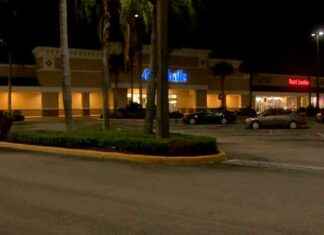When Jaume Collboni entered the Barcelona mayor’s office for the first time on June 17, already invested with his new responsibility, all trace of Ada Colau, the previous tenant of these premises, had completely disappeared.
Among the objects that had caused withdrawal, the photographs of eight illustrious women, from Frederica Montseny to Mercè Rodoreda passing through Neus Català, which the mayoress had introduced into a room-museum dominated, then and now, by paintings by artists (all men). like Miró, Tàpies or Casas.
The mayor immediately wanted to put his stamp on his new place of work. He has not had time to renovate furniture, to further redecorate an office that from day one contains some photos that accompanied him in other municipal offices during his time as first lieutenant: that of Harvey Milk, a pioneer in the political struggle for the rights of homosexuals, and those of Collboni himself together with King Felipe VI, Barack Obama and the four former socialist mayors of Barcelona.
The case of Collboni, who has added those of Spain and Europe to the banners of Barcelona and Catalonia -in addition to a small rainbow flag-, exemplifies how changes in headlines in city halls cause changes in the offices of city councils that do not usually affect the pieces that are part of the municipal patrimony and that are limited to the appearance of personal objects such as photographs or books.
The office of the new socialist mayor of Tarragona, Ruben Viñuales, has little new. The only elements that reveal the change of tenant are two photographs and the Funko Pop figure on his desk. One of the framed images is a selfie of the mayor himself with his two daughters in which all three wear their faces painted. The other immortalizes a spontaneous hug between the two girls.
“The figure was given to me by my brother and I thought it was funny,” explains Viñuales, “it represents The Godfather.” It is a miniature version of the most cinematic mob boss, Vito Corleone.
“I think that nothing has changed here since Joan Miquel Nadal was mayor,” says Viñuales. And Nadal left the office 17 years ago. Since then, the same table, the same chairs, the same sofa and the same paintings. One of them, however, all the numbers have to be replaced, “it is a panorama of Tarragona, but very gray and I like the pictures with colors”.
The mayor has no further changes planned, at least in the short term. “That everything has been the same for so long is positive, it means that we consider that this is a temporary office, that it does not belong to us, that we are here for a while and then another will come.”
On June 16, the eve of the inauguration of the new mayor of Lleida, Fèlix Larrosa, the Socialist shared a coffee with the outgoing mayor, the Republican Miquel Pueyo in the mayor’s office. the same one that Larrosa himself had left in 2019. Pueyo advanced the socialist that he would leave him a chest of drawers. He told her that in one of the first interviews as mayor they asked him what had been found in the drawers and that he replied that there were no drawers.
Fèlix Larrosa, who has not yet made changes to his office, stated a few days ago that he intended to remove that drawer unit: “I don’t like drawers, things are forgotten in them, I need to have the papers on the table.”
The paintings that Pueyo had are still hanging: ‘Ovals’, an oil painting by Lluis Trepat, from the Museu Morera collection (donation of Josep Vallverdú); two engravings by the painter Àger Benet Rosell (uncle of the former Barça president Sandro Rosell), also from the Morera collection, and a work by the cartoonist, illustrator and animator from Lleida Carles Porta, who, according to the City Council, Pueyo personally requested from the artist.
On July 17, Xavier Garcia Albiol returned to his office at the Badalona mayor’s office for the third time, after having been mayor from 2011 to 2015 and seven months during the last term. On this occasion, the absolute majority guarantees that he will be able to use his two offices for the next four years.
One of them is located in the Casa de la Vila, the centrally located stately building from the early 1860s, which it only uses on the occasion of protocol and institutional acts, for which reason it has not introduced any changes. Yes, he has done it in the offices of the modern El Viver building, built in 2007, where he feels more comfortable because he can be closer to the administrative machinery and the councilors.
In this office he has introduced very few changes, he has only asked to install some plugs to raise the table so that it can be at his height
Albiol is not very given to introducing new decorative elements and only has a photograph with King Felipe VII during a private visit. He does not have a photo of her family, because following his custom, he is very jealous of her privacy and tries to keep her away from any public exposure.
More light, more color and more plants is what the new mayor of Girona, Lluc Salellas, yearns for in his new office, which a month after taking office has not yet finished making it his own. A photograph of his family, located at the foot of the computer, is practically the only contribution to the decoration of a room in which he will spend many hours and which looks, for now, very, very dark.
In the photo, his life partner, Andrea Tomás from Bilbao, and the mayor himself appear smiling together with their two daughters in common, Teia (4 years old) and Ginesta (2) and Maixe, the daughter Andrea had with a previous partner, who also live with them. This will not be the only memory of the girls that will be within the four walls of the office: some drawing of the little ones and maybe some toy with which they can entertain themselves if they visit them one day. Reconciliation things.
For now, the dark tones of the furniture and the walls are broken with some paintings by women artists from Girona that the previous mayoress, Marta Madrenas, had chosen for the office. There are also legacies from other mayors such as a replica of the popular Lletres toves by the sculptor Paco Torres Monsó, present in the office since 2014, in the time of Carles Puigdemont.
The replica of those letters, A,B,C and Q, which rests large in front of the Generalitat de Girona headquarters, are almost the only notes of color in a room with very little natural light. Probably those letters will continue in this space, although another location may be sought for them. Now they are located on a low glass table, next to the sofas from where the mayor receives visitors.
As for the paintings present in the space, it is likely that Salellas changed them for others from the municipal art catalogue. Close sources affirm that they will be by artists from Girona and among the names chosen there could be some work by the painter Narcís Comadira, one of the hundred signatories of the manifesto in support of Guanyem, before the start of the electoral campaign of the municipal governments. They will be works with color and some will have “some political message.”
It will also maintain some decorative elements such as a small sculpture of Esquivamosques, one of the characters from the Fal·lera Girona family, an entity whose mission is to recover the tradition of giants and big heads, or the Eagle, another symbol of the city. In recent days, Salellas has added the new statue of La Fal·lera, a lioness.








